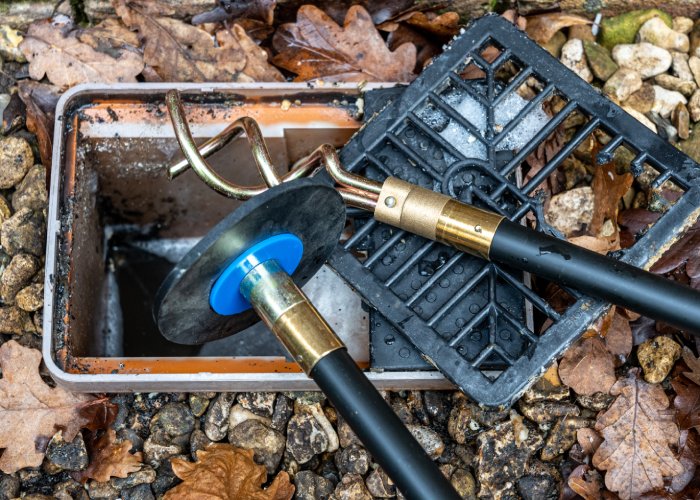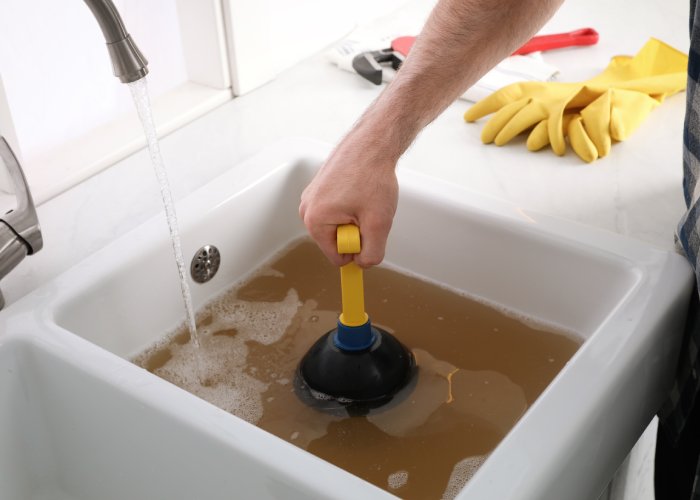In the bustling metropolis of London, drainage issues are a common concern for both residents and businesses. The city’s rich history, combined with its rapid urbanization, makes it susceptible to a myriad of drainage problems. Fortunately, the expertise of a plumber in London is readily available to address these issues.
The age of London’s infrastructure, particularly in many historic neighbourhoods, poses a significant challenge. Some parts of the city still rely on Victorian-era sewer systems, ill-equipped to handle the modern demands of a densely populated metropolis.
Moreover, London’s frequent heavy rainfall, characteristic of its climate, can strain drainage systems to their limits. The rapid expansion and construction within the city can further compound these challenges by compacting the soil, hampering its natural ability to absorb water.
This article delves into the most prevalent drainage issues faced by Londoners, shedding light on their causes and the solutions that plumbers in London employ to mitigate them. Whether it’s dealing with blocked drains, basement flooding, or sewer backups, having access to professional plumbers is essential to maintaining a dry and functional property in this vibrant city.

What Is the Cause of Poor Drainage in London?
London’s drainage issues stem from a combination of factors that can create a perfect storm of plumbing and drainage challenges. While charming, the city’s historic infrastructure often falls short of meeting the demands of its ever-growing population. One of the main culprits is the presence of Victorian-era sewer systems in many parts of London. These systems were designed in an era when the city’s population and wastewater volumes were significantly lower than they are today. As a result, they struggle to cope with the modern load of sewage and stormwater.
Furthermore, London’s climate, characterized by frequent heavy rainfall and occasional snowmelt, adds to the drainage woes. The city’s drainage systems must manage significant quantities of water, especially during storms, which can lead to flooding and overwhelmed sewers.
The city’s rapid urbanization and ongoing construction projects also contribute to drainage problems. As new buildings and infrastructure are erected, the ground becomes more compact, reducing its ability to absorb water naturally. This hampers the overall drainage capacity and can lead to localized water accumulation.
The 10 Most Common Drainage Problems in London
London’s drainage problems are diverse and challenging, largely stemming from a combination of ageing infrastructure, a high population density, frequent heavy rainfall, and ongoing urban development. Addressing these issues effectively requires the expertise of professional plumbers in London, who are well-equipped to tackle a wide range of drainage problems and ensure that properties remain dry and functional in this dynamic city.

1. Blocked Drains
Blocked drains are perhaps the most prevalent drainage issue in London. They can occur for various reasons, such as the accumulation of grease, hair, food debris, or foreign objects within the pipes. With the historic nature of many parts of London, the sewer systems are often outdated, making them more prone to blockages. To address this issue, professional plumbers in London employ various techniques, including drain rodding and high-pressure jetting, to clear the blockage and restore proper water flow.
2. Flooding
Flooding is a significant concern in London, particularly in low-lying areas. The city’s heavy rainfall and outdated drainage systems can lead to flooded streets and properties during intense storms. To combat this problem, local authorities have invested in improved drainage infrastructure and flood management systems, such as flood barriers and retention basins, to mitigate the impact of flooding.
3. Sewage Backups
Sewage backups are among the most distressing drainage issues one can face. They occur when the sewage system becomes overloaded or damaged, leading to sewage backflow into sinks, toilets, and drains. Professional plumbers in London are equipped to address these problems promptly and safely, ensuring that sewage backups are resolved efficiently to prevent health hazards and property damage.
4. Leaking Pipes
Leaking pipes are a common drainage problem that can lead to water damage, mould growth, and structural issues. In the cold and wet London climate, leaks can worsen rapidly, making regular inspections and maintenance crucial to preventing costly damage. Plumbers can identify and repair leaks promptly, preserving the integrity of your plumbing system and property.
5. Tree Root Infiltration
London’s historic neighbourhoods boast beautiful trees, but their extensive root systems can pose a challenge when infiltrating drainage pipes. Tree roots, seeking water, can penetrate pipes, causing cracks and blockages. This issue requires specialized plumbing services to address the problem effectively. Plumbers in London often use root-cutting equipment or trenchless repair methods to deal with tree root infiltration without causing significant disruption.
6. Broken Drainage Systems
Over time, London’s ageing drainage systems can deteriorate, leading to cracks, collapses, or other structural issues. Repairing or replacing these systems is a complex task that demands the expertise of a professional plumber in London. They can assess the extent of the damage and recommend the most appropriate solutions, such as pipe relining or full system replacement, to ensure efficient drainage.
7. Inadequate Drainage Design
In some instances, drainage problems in London result from poor initial design and installation. Inadequate drainage systems can cause water to pool in yards and basements, leading to water damage and discomfort for homeowners. Drainage design and correction experts can rectify these issues by designing and implementing effective drainage systems tailored to the property’s needs.
8. Surface Water Drainage
London’s urban landscape, characterized by impervious surfaces like roads and buildings, can hinder the natural absorption of rainwater. This leads to surface water runoff and flooding during heavy rainfall. To combat this problem, sustainable urban design and green infrastructure solutions are being implemented in various parts of London. These approaches include permeable pavements, green roofs, and rain gardens to manage rainwater effectively and reduce the risk of flooding.
9. Basement Drainage
Many London properties have basements, and poor basement drainage can result in dampness, mould, and structural damage. Installing effective basement drainage systems or upgrading existing ones is crucial for maintaining a dry and habitable basement. Sump pumps, drainage channels, and waterproofing measures are common solutions to address basement drainage issues.
10. Sump Pump Failures
Sump pumps are crucial in areas prone to flooding, such as some parts of London. When sump pumps fail, water can accumulate in basements, damaging property. Regular maintenance and prompt repairs by professional plumbers can prevent these issues. Experts can ensure that sump pumps are in good working order to protect your property from flooding and water damage.
Bottom Line
London’s drainage issues are a diverse and common challenge for residents and businesses, thanks to factors like ageing infrastructure, heavy rainfall, and ongoing urban development.
However, with the expertise of a skilled plumber, these problems can be efficiently resolved. Whether it’s addressing blocked drains, sewage backups, or basement flooding, the timely intervention of professional plumbers is essential to maintain dry and functional properties.
Regular maintenance and investment in modern drainage solutions can go a long way in mitigating these issues, ensuring that Londoners can continue to enjoy their dynamic city without disruption.




